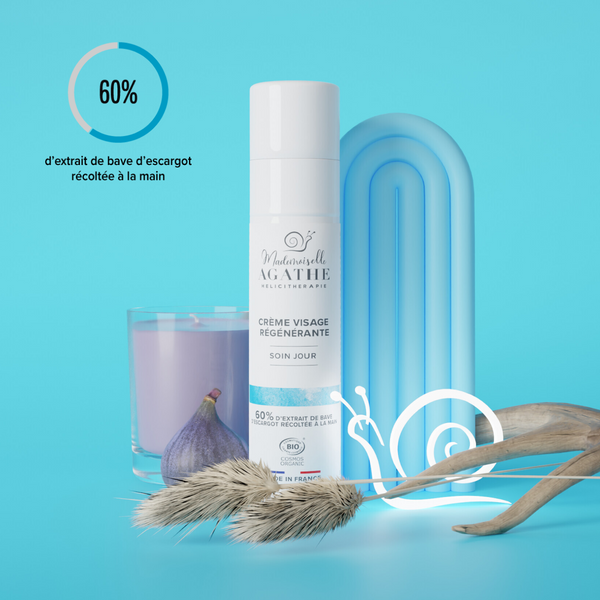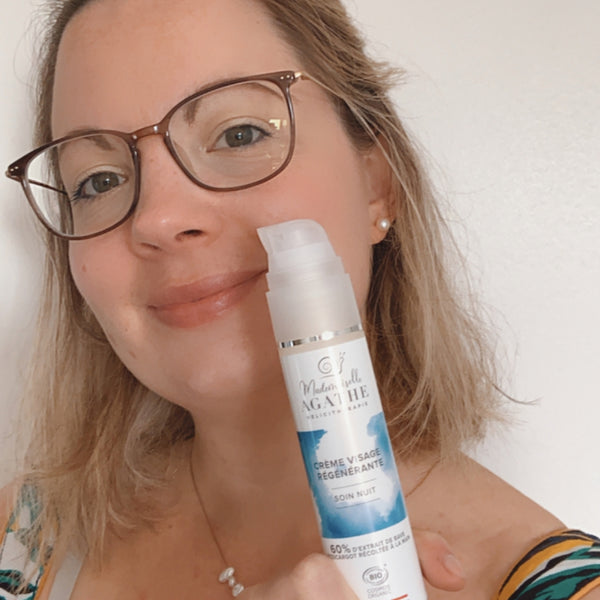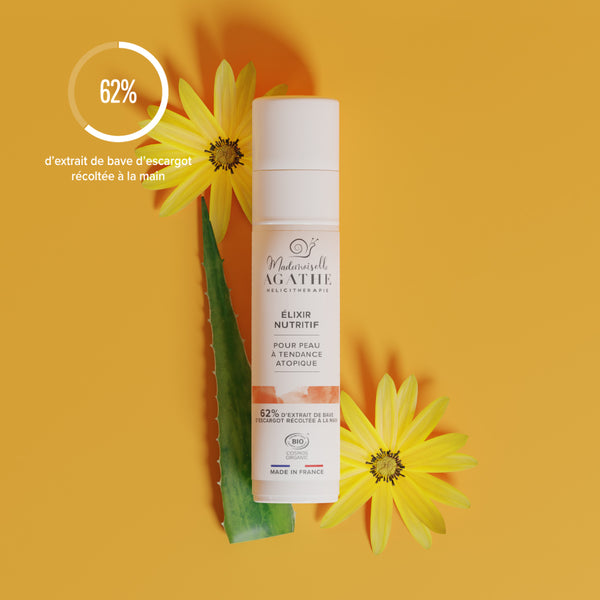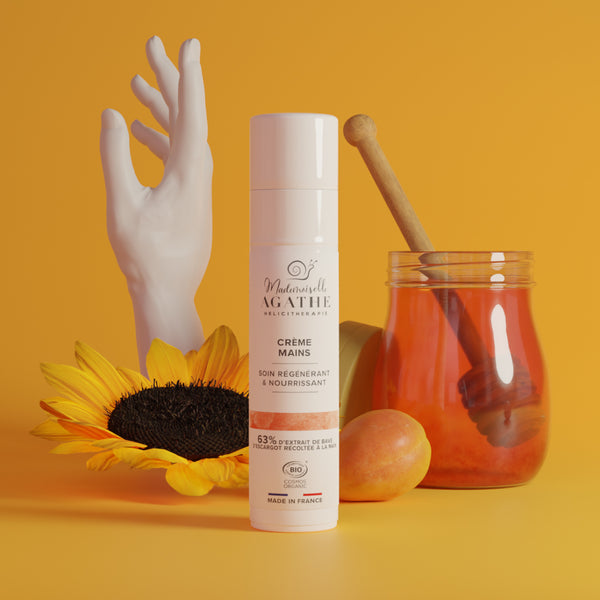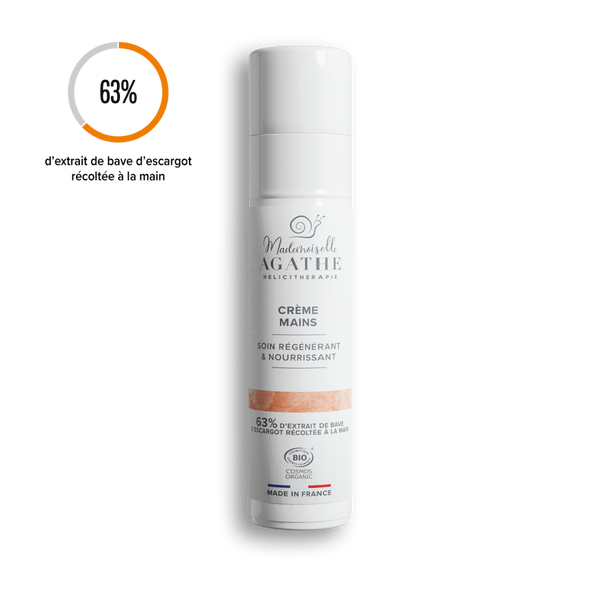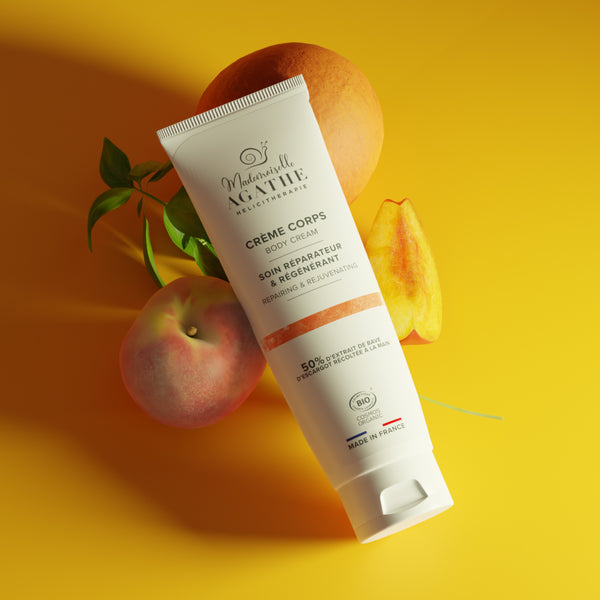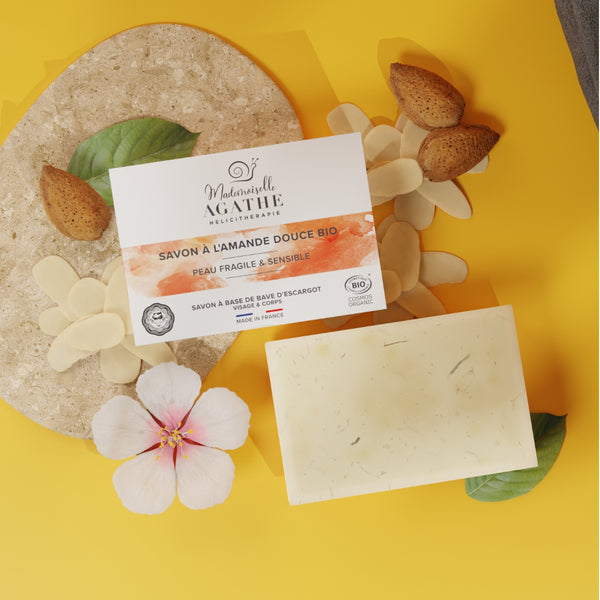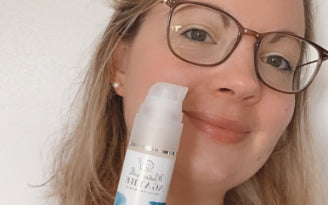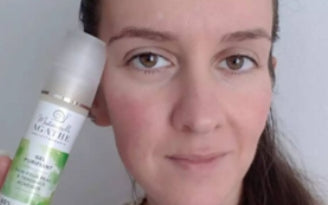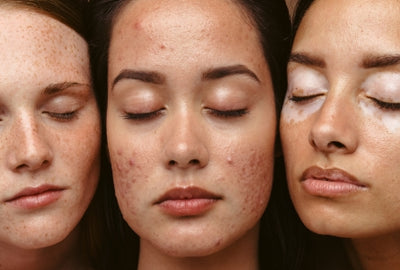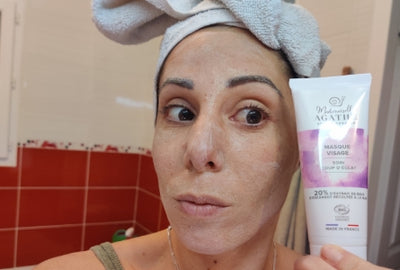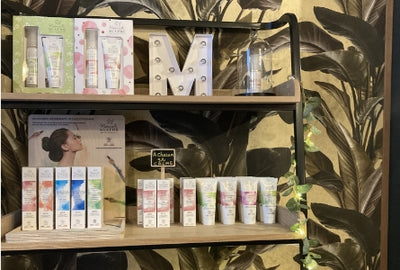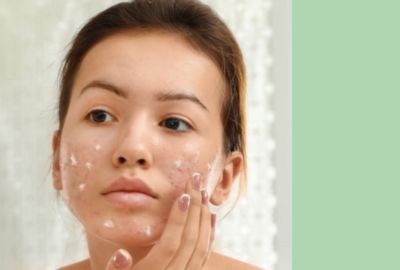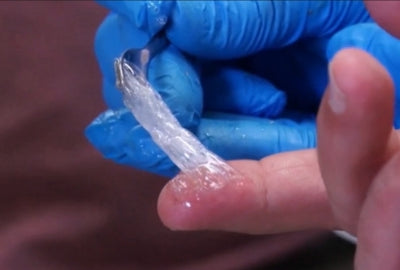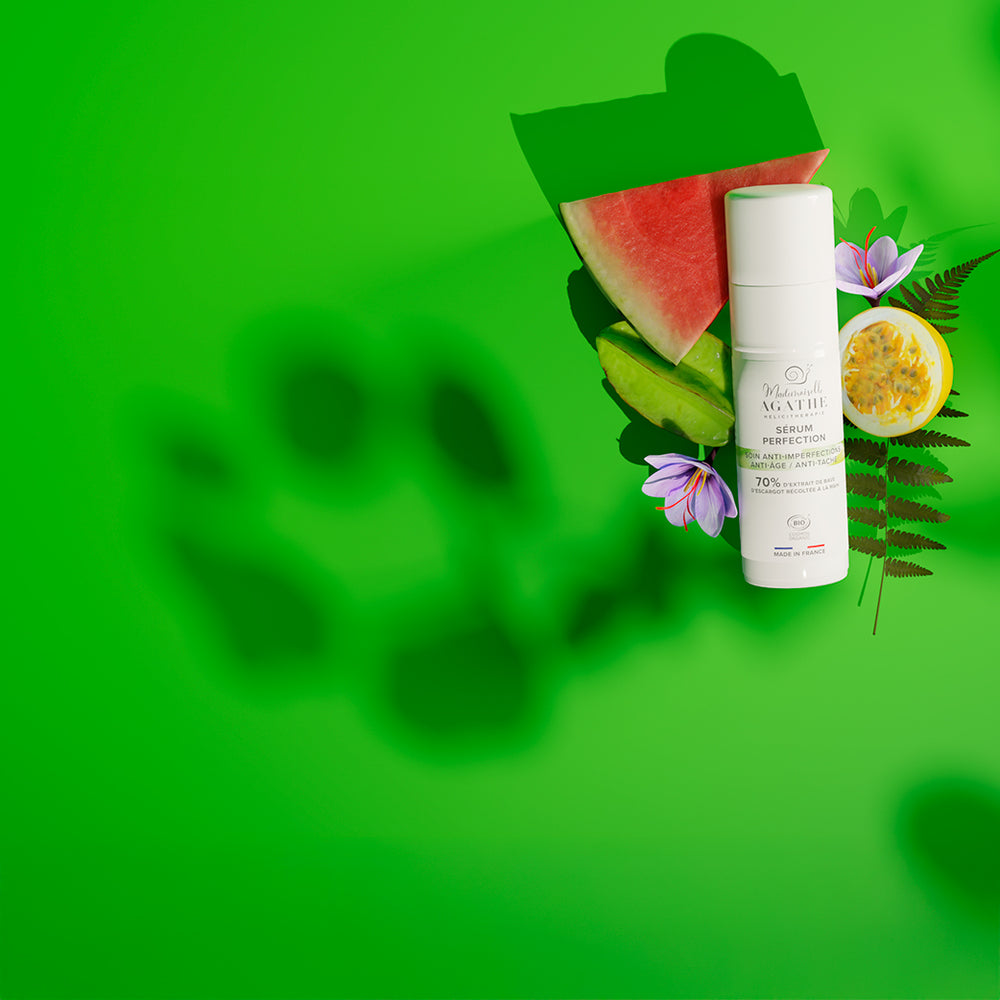Composition of snail slime
Contrary to what one may read or hear about snail slime, it is not allantoin or glycolic acid which are the most abundant proteins in snail slime but hemocyanin, actin and tubulin. These three proteins are identified as major proteins in our snail slime extract.
- Hemocyanin: is used in cosmetics to activate cellular respiration, it is an essential element in the regeneration of the skin and the maintenance of extracellular skin proteins. (Source: Patent Application FR 280432 A1 - Abdulghani – A.Aet al, 1988 – Gadi Borkow, 2004)
- Actin: plays an important role in the healing of skin cells and regulates the production of collagen which helps maintain skin firmness. (Source: Zhaoping Qui et al, 2018-PIMB: 29 888 864)
- Tubulin: plays a role in the structure and architecture of the cytoskeleton. It is also used as a biomarker for skin aging. : 28626498).
We commissioned the Natural History Museum of Paris in 2018 and the University of Normandy in 2019 for a series of scientific analyzes in chromatography and mass spectrometry. This research aims to demonstrate the presence of proteins and peptides in the snail slime that we collect by hand and that we process by cold low-pressure extraction.
5 series of studies
Studies carried out from 2018 to 2021
The database search shows that the choice of precipitation protocol is effective. Hemocyanin and actin are two major proteins present. A hundred proteins are detected with the identification of 23 proteins to date. Bibliographic research on the role of the identified proteins allots to them a link with the skin, its immune system or its collagens. (See details below).
2018
Analyzes carried out by the Bio-organic mass spectrometry platform of the National Museum of Natural History in Paris. A hundred proteins detected with the identification of 23 proteins. Research in the bibliography on the role of the proteins identified, attribute to them all a link with the skin, its immune system or its collagens.

Proteins identified in connection with the skin:
- Hemocyanin chains , commonly symbolized by Hc, are essential elements in skin regeneration and maintenance of extracellular skin proteins.
- Cysteines tRNA ligase , involved in the synthesis of melanin,
- RIF1 proteins, associated with telomeres, are involved in the process of cellular aging, repair and protection of damaged DNA.
- Tissue factor (TF) acts in wound healing when it comes into contact with blood to activate coagulation. Bisphosphoglycerate mutases are enzymes involved in the process of glycolysis. They intervene in the regulation of oxygen transport and thus allow the release of oxygen near the targeted tissues.
- RNA helicases are enzymes involved in a number of cellular processes including cell growth and division and are specialized in crucial cellular processes like DNA repair.
Proteins identified in connection with the immune system of the skin:
- Actin is a bi-globular protein with an important role in the healing of skin cells by serving as a point of support for the immune system.
- Myosin is a protein that plays a fundamental role in cells with contractile activity. Its action results from its association with actin, by the sliding of actin filaments on myosin filaments.
- Keratin cytoskeletal epidermal type II are keratins present in epithelial tissues and play a role in establishing the epidermal barrier on the skin.
- Protein Disulfide Isomerase or PDI are proteins that help load peptides responsible for the immune response.
- Glycosytransferases are enzymes that act as sugar donors. Some of these inhibitors are known as antibiotics and serve as an antifungal agent.
Proteins identified in connection with skin collagens:
- Alpha 3 laminins form independent networks associated with collagen networks by promoting their adhesion.
- Phosphatidylcholine 3-kinases are lipids (fatty substances), which contribute to maintaining the integrity of these membranes, preserving their elasticity. On the clinical level, a recent publication reports its beneficial interest in the treatment of Psoriasis.
- Serine proteases have an immunological role. They catalyze elastin which determines the mechanical properties of the skin's suppleness.
- 78 kDa glucose also known as immunoglobulin proteins (BiP) are molecular chaperones that bind to newly synthesized proteins.
- Cna type B are surface proteins linked to collagen. These proteins are necessary for cells to adhere to collagen.
- The pi1 46 prophage use cytoskeletal structures such as the actin skeleton, for intracellular positioning interacting with collagen.
Collagen proteins identical to human skin:
Collagen is a fibrous protein whose main function is to give tissues mechanical resistance to stretching. It is the most abundant protein in the animal kingdom, representing a quarter of the protein mass. Its family has 23 types of collagen, assembled from 38 distinct chains.
We should therefore be talking about collagens, and not collagen. Each type of collagen has its own structure and is found in particular organs. The structures identified in our snail slime extract are collagens which are all bound to connective tissues like skin.
2019 - 2020
Evaluation of the antibacterial activity of snail slime.
Bacteriostatic effect of our anti-pimple Gel in agar medium against S. epidermidis demonstrated. The bacterial species tested is Staphylococcus epidermidis or white staphylococcus. It is a bacterium of the genus Staphylococcus. It is facultative anaerobic. It is a human commensal bacterium, typical of the flora of the skin. This microorganism is linked to certain skin infections of the skin such as acne.
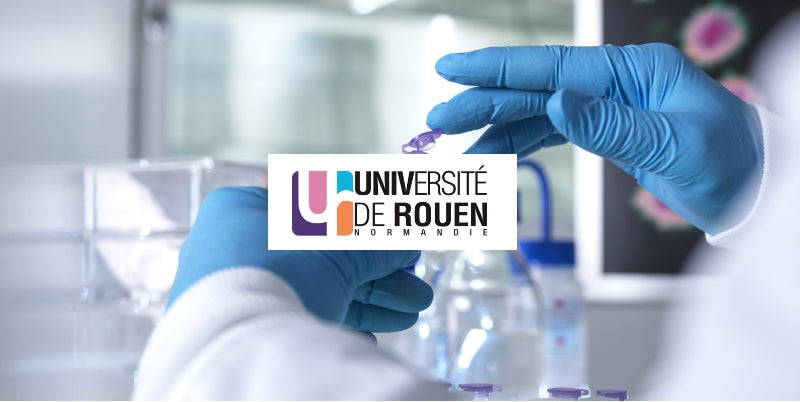
2019 - 2020
Separation and identification of major proteins.
Hemocyanin, actin and tubulin are identified as major proteins in our snail slime extract. We have identified other proteins of lower relative abundance, such as retinal dehydrogerase, calreticulin (CTR) and Rho. All are involved in skin development.

-

Majority proteins
Main proteins of our snail slime extract
- Hemocyanin: is used in cosmetics to activate cellular respiration, it is an essential element in the regeneration of the skin and the maintenance of extracellular skin proteins. (Source: Patent Application FR 280432 A1 - Abdulghani – A.Aet al, 1988 – Gadi Borkow, 2004)
- Actin: plays an important role in the healing of skin cells and regulates the production of collagen which helps maintain skin firmness. (Source: Zhaoping Qui et al, 2018-PIMB: 29 888 864)
- Tubulin: plays a role in the structure and architecture of the cytoskeleton. It is also used as a biomarker for skin aging. : 28626498).
2019 - 2020
Non-targeted approach to secondary metabolites.
Observed presence of small proteins such as lipids, nucleobases, alkaloids, and flavonoids. Identification of oxygenated compounds such as vitamin D (Vitamin D3, D4, Ergosterol) which plays a major role in skin renewal, protects the skin from free radicals and is essential for wound healing and supports the immune function of the skin.

2021
+ 153% stimulation of hyaluronic acid slowing down oxidation of the skin due to aging*.
+ 97% increase in adiponectin secretion which boosts collagen synthesis to maintain skin suppleness.*
(* Study conducted on topical application of the anti-aging face serum on human skin explants.)
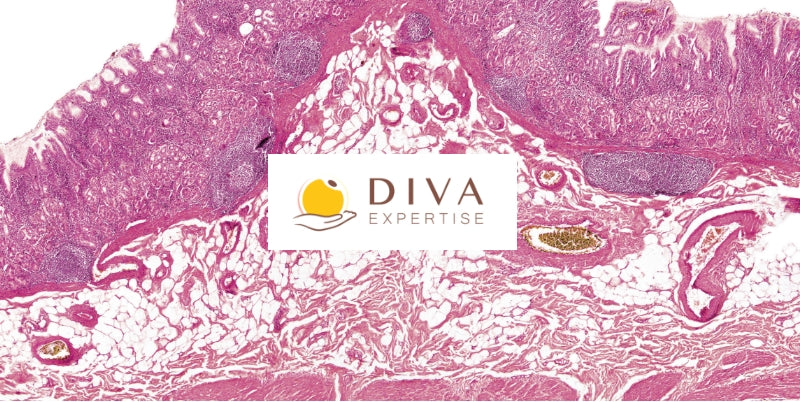
-

+ 153% stimulation of hyaluronic acid.
2025: Healing effect of our snail slime extract
This study was conducted by Professor Brigitte Dréno, a dermato-oncologist at Nantes University Hospital, and Faris Matouf, a research engineer and Doctor of Veterinary Medicine, to evaluate the healing properties of our snail slime extract. Performed on human keratinocytes (HaCaT cell line), this study demonstrates a significant stimulation of cell regeneration.

-
Pair text with an image to focus on your chosen product, collection, or blog post. Add details on availability, style, or even provide a review.
-


Discussion and conclusion
Our studies demonstrate the presence of hemocyadine and actin as major proteins. They are both known for their roles in skin regeneration and wound healing, as indicated by in vitro research and clinical studies. It is important to note that with this work, we demonstrated that the snail slime extract used in Mlle Agathe cosmetics was rich in a large number of proteins and that all these proteins have a more or less directly with the skin. Another interesting fact, the oxygenated compounds present such as vitamins D which have an essential function on the good health of the skin, had never been highlighted. This constitutes a new virtue and always linked to the skin. Further investigations are needed to identify the other proteins present. This work could constitute a basis for a future study.
Reproduction forbidden
Any total or partial reproduction and any representation of the substantial content, of one or more of its components, by any process whatsoever, of these scientific studies is prohibited without the express agreement of Mlle Agathe cosmetics, which is a commercial brand operated by SARL GP Diffusion.
The results of these studies, the molecules and any subsequent derivatives that could be synthesized elsewhere, are the exclusive property of Mlle Agathe cosmetics (SARL GP Diffusion). Only Miss Agathe (SARL GP Diffusion) has the right to use them and exploit them as she pleases for any application, on all media and in all territories of her choice.
